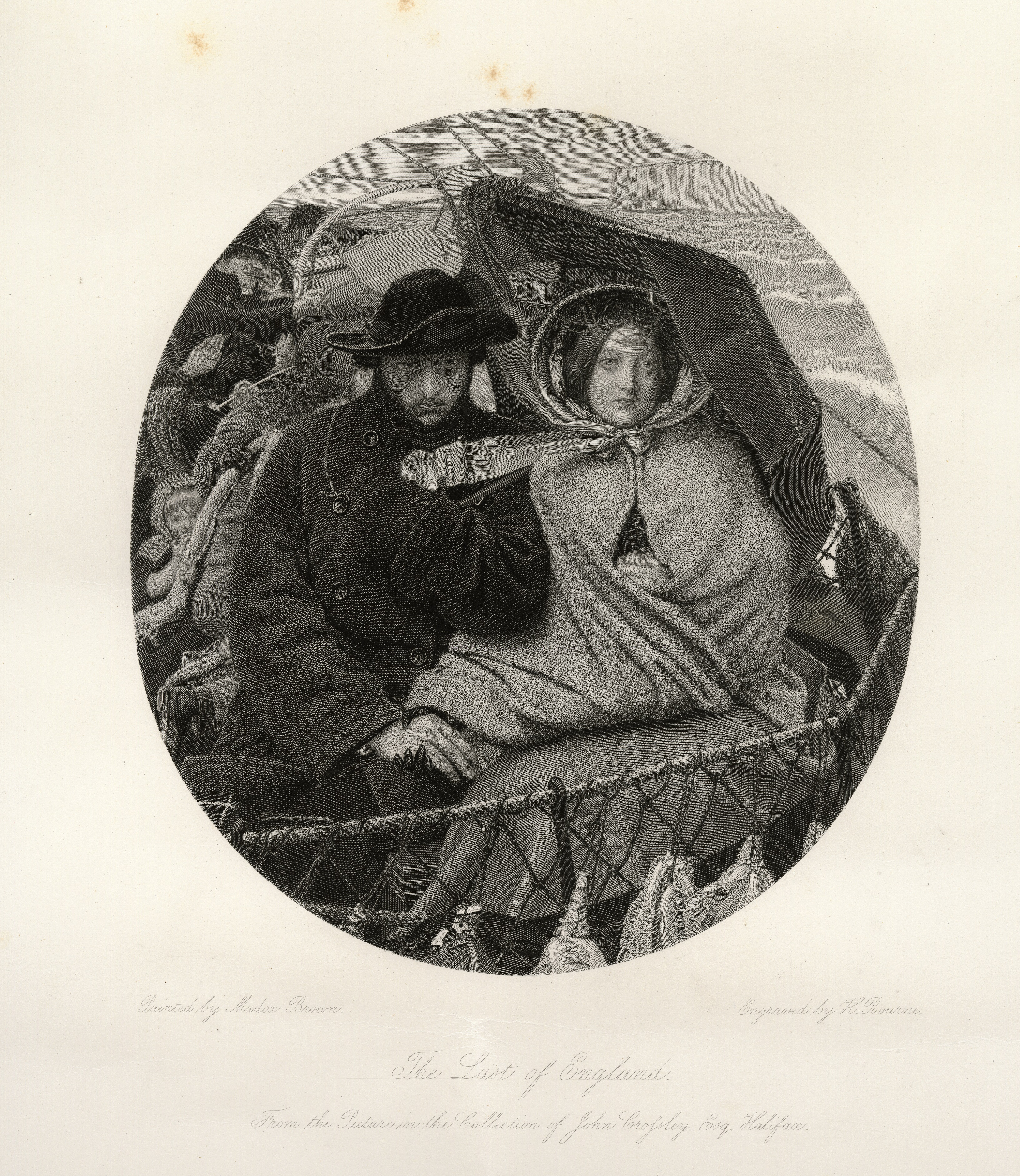The Body as Interface: New Woman Identity in George Egerton’s “The Regeneration of Two”
Keywords:
New Woman, literature, The Regeneration of Two, fashionAbstract
This article examines George Egerton’s New Woman short story, “The Regeneration of Two”, from her 1894 collection Discords. Through the physical, mental, and social transformation of her heroine, Fruen, Egerton critiques normative femininity and the limited narratives that women are afforded within Victorian fiction, using the female body as an interface for the exploration and transformation of Victorian femininity and identity. In the text, the languages of dress and self-fashioning are used to explore identity and subjectivity, while also critiquing the conflicting expectations of women and the artificial performativity of the angelic feminine ideal. Fruen’s transformation into a “whole woman” (Egerton, “Regeneration” 252) through the rejection of her corset and the literal growth of her body, as well as her developed social awareness of women’s position, offer a distinctly ‘New Woman’ mode of femininity based on strength and individual agency. In Fruen’s growth towards self-actualisation, her body acts as an interface of not only her own negotiation of identity and its signifiers, but also of Egerton’s exploration of women’s narratives and the systems and conventions that create and uphold limiting ideals of femininity.
References
Ardis, Ann L. New Women, New Novels: Feminism and Early Modernism. New Brunswick: Rutgers UP, 1990.
Audsley, George Ashdown. Colour in Dress: A Manual for Ladies. Philadelphia: Curwen Stoddart, 1872.
Bartky, Sandra Lee. “Foucault, Femininity, and the Modernization of Patriarchal Power”. Femininity & Domination: Studies in the Phenomenology of Oppression. New York: Routledge, 1999. 63-82.
Bryant, Sophie. “Our Choice from the Fashions.” Aglaia, 1 (1893): 8-9.
Burris-Janssen, Emma. “‘My Life Has Been a Hell, Mother’: Victimisation and Abortion in George Egerton’s ‘Virgin Soil’ and ‘The Regeneration of Two’”. The Latchkey: Journal of New Woman Studies, 8 (2016/17: par. 1-15. The Latchkey, http://www.thelatchkey.org/Latchkey8/essay/Janssen.htm. 13 June 2019.
Butler, Judith. Gender Trouble: Feminism and the Subversion of Identity. New York: Routledge, 1990.
Cooper, Cynthia. “The Victorian and Edwardian Eras: 1860-1910.” The Fashion Reader. Ed. Linda Welters and Abby Lillethun. 2nd ed. New York: Berg, 2011. 34-45.
Crane, Diane. Fashion and its Social Agendas: Class, Gender, and Identity in Clothing. Chicago: University of Chicago Press, 2000.
Cunningham, Gail. The New Woman and the Victorian Novel. London: Macmillan, 1978.
D’hoker, Elke. “‘Half-Man’ or ‘Half-Doll’: George Egerton’s Response to Friedrich Nietzsche”. Women’s Writing 18.4 (2011): 524-546. Taylor and Frances Online. 30 May 2017.
Dickson, E. Winifred. “The Distribution of Weight in Clothing.” Aglaia, 1 (1893): 9-10.
Egerton, George. “A Keynote to Keynotes.” Ten Contemporaries: Notes Toward Their Definitive Bibliography, Ed. John Gawsworth. London: Ernest Benn Ltd, 1932. 58-60.
--. “The Regeneration of Two”. Keynotes & Discords. London: Virago, 1983. 163-253.
Ewing, Elizabeth. Dress and Undress: A History of Women’s Underwear. London: B. T. Batsford Ltd., 1978.
Finch, Casey. “‘Hooked and Buttoned Together’: Victorian Underwear and Representations of the Female Body”. Victorian Studies 34.3 (1991): 337-363. JSTOR. 3 March 2017.
Gardiner, Juliet, ed. The New Woman: Women’s Voices 1880–1918. London: Collins and Brown, 1993.
Gilbert, Pamela K. Disease, Desire and the Body in Victorian Women’s Popular Novels. Cambridge: Cambridge UP, 1997.
Hager, Lisa. “A Community of Women: Women’s Agency and Sexuality in George Egerton’s Keynotes and Discords.” Nineteenth-Century Gender Studies 2.2 (2006): 1-26. JSTOR. 6 June 2017.
--. Piecing Together a Gray Patchwork: The Formation of Feminine Identity in George Egerton’s Keynotes and Discords. MA Thesis. University of Florida, 2001. 4 April 2018.
Hale, Sarah Josepha. “Editor’s Table: Fashions of Dress and Their Influence”. Godey’s Lady’s Book and Magazine, 70 (April 1865): 370.
Healthy and Artistic Dress Union. Aglaia, 1 (1893).
Holiday, Henry. “The Artistic Aspect of Dress”. Aglaia, 1 (1893): 13-30.
“Interface.” Merriam-Webster.com. Merriam-Webster, n.d. 10 December 2018.
Kortsch, Christine Bayles. Dress Culture in Late Victorian Women’s Fiction: Literacy, Textiles and Activism. Hampshire: Ashgate Publishing, 2009.
Ledger, Sally. The New Woman: Fiction and Feminism at the Fin de Siècle. Manchester: Manchester UP, 1997.
Michie, Helena. The Flesh Made Word: Female Figures and Women’s Bodies. Oxford: Oxford UP, 1987.
Pykett, Lyn. The “Improper” Feminine: The Women’s Sensation Novel and New Women Fiction. New York: Routledge, 1992.
Seys, Madeleine C. Fashion and Narrative in Victorian Popular Literature: Double Threads. New York: Routledge, 2018.
Silver, Anna Krugovoy. Victorian Literature and the Anorexic Body. Cambridge: Cambridge UP, 2002.
Smith, William Wilberforce. “Corset Wearing: The Medical Side of the Attack.” Aglaia. 1 (1893): 7.
Stubbs, Patricia. Women & Fiction: Feminism and the Novels 1880-1920. Sussex: Harvester Press, 1979.
Summers, Leigh. Bound to Please: A History of the Victorian Corset. New York: Berg, 2001.
Talairach-Vielmas, Lawrence. Moulding the Female Body in Victorian Fairy Tales and Sensation Novels. Hampshire: Ashgate, 2007.
Vicinus, Martha. Introduction. Keynotes and Discords. By George Egerton. London: Virago, 1983. vii-xix.
Warwick, Alexandra, and Dani Cavallaro. Fashioning the Frame: Boundaries, Dress and the Body. New York: Berg, 1998.
Woman’s Life. 21 January 1899. 291.


